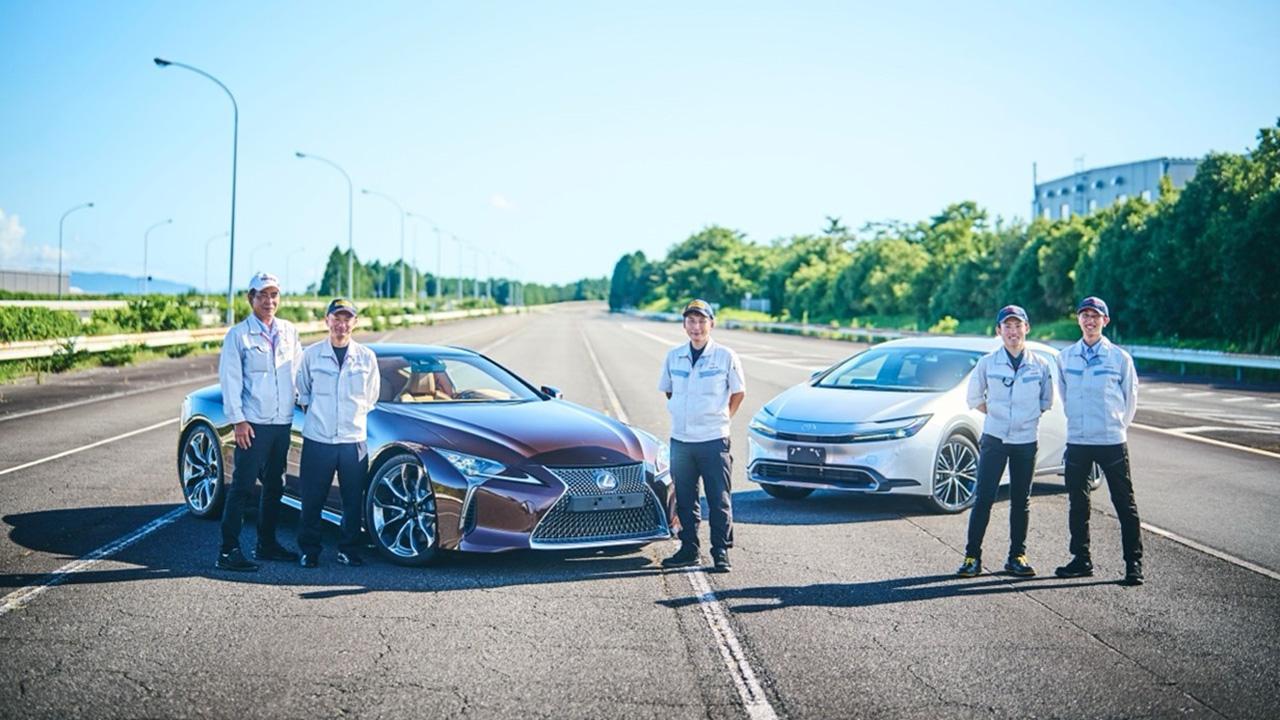
Critical to making ever-better cars are the test drivers. We conducted comparative experiments on the perceptual abilities of young trainees and veteran drivers. And the results?

The experts called ”top guns” in the field of test driving belong to the Advanced Technical Skills Institute Division.
How crucial is human sensitivity in this role? To demonstrate it, we used a test vehicle equipped with numerous sensors to visualize the sensory capabilities of a young and veteran driver. What exactly is the magnitude of the skill gap between them?
A 24-year-old trainee challenges a seasoned veteran
As introduced in the second installment of this series, Toyota's test vehicle driving qualifications are divided into five levels: Beginner, Intermediate, Advanced, S1, and S2.
S1 and above are licenses exclusive to the engineering department, signifying the ability to control and evaluate vehicles at their limits in any environment. An S2 qualification means the driver can quickly evaluate a car even on a first-time drive and course, and on a circuit, they can maintain a ±1 second range of lap times. This level also demands personal qualities befitting a representative of Toyota Motor Corporation.
The veterans who accepted the challenge from younger drivers are all top guns with an S2 qualification.
Let's start by looking at the driving function. This involves evaluating whether the car accelerates and decelerates as intended in response to accelerator operations, a process referred to as "powertrain drivability" in car manufacturing.
For this challenge, we had a powertrain drivability specialist from the Advanced Technical Skills Institute Division's FD Team Group, SX Kozo Iteya. A person seemingly destined to become a test driver, Iteya has been passionate about machinery and vehicles since childhood, even disassembling his father's car when he was in elementary school.
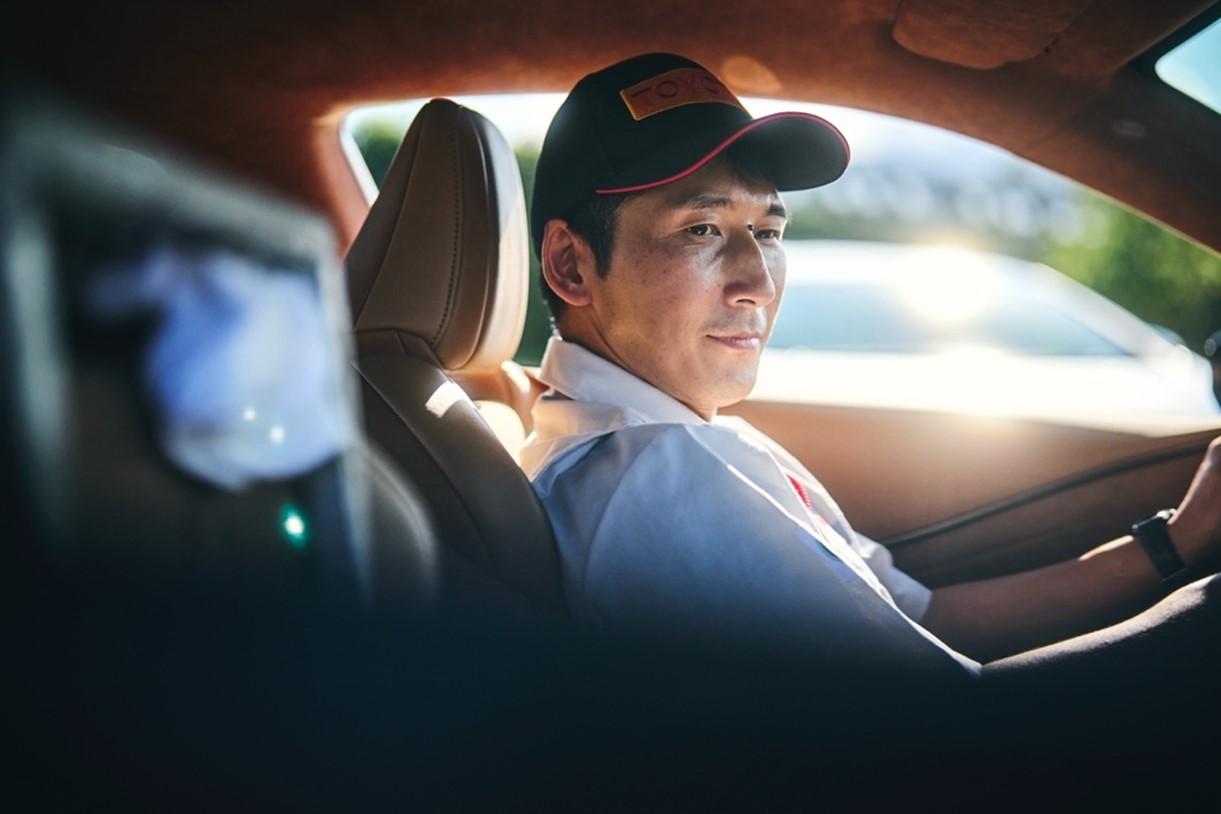
Then we have 24-year-old Yuto Sagara as the young challenger facing Iteya. He graduated from the Toyota Technical Skills Academy and joined the company in 2018.
During his time at the academy, he learned that the Advanced Technical Skills Institute Division was recruiting one newcomer. Sagara volunteered, competing against 120 peers in the first round of selection, where 40 were chosen. He passed numerous selection tests and practical training sessions before graduation and was assigned to the division upon joining the company.
Sagara
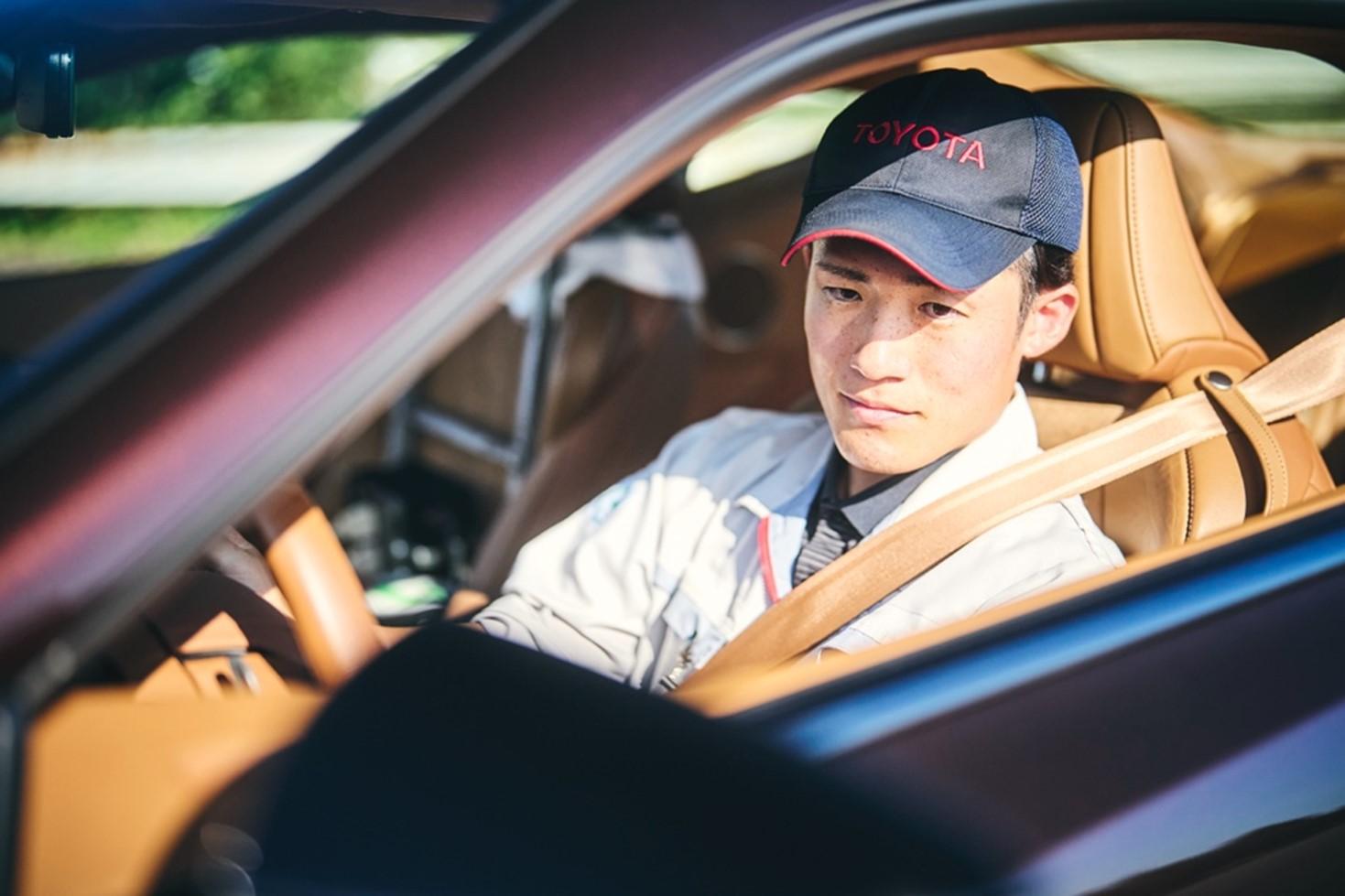
I was thrilled to be part of the Advanced Technical Skills Institute Division, but I was also anxious as everyone else was a much more experienced senior.
My superiors and seniors advised me, ’We will support you in acquiring driving skills and knowledge, but you should hone your character at your training locations and in your daily life.’
At Toyota, individuals who join as test drivers at 18 typically achieve the Advanced level by the age of 25, S1 by 30, and S2 thereafter. Given the risky nature of the job, not only driving skills but also character development are given high importance.
Currently, the Advanced Technical Skills Institute Division is conducting a trial to rapidly develop S2 drivers. As a test case, they selected two students from the Toyota Technical Skills Academy based on their suitability as test drivers and their character.
Sagara is one of them. He achieved the S1 level in 2022 at the age of 23 and is diligently working towards attaining the S2 level by the age of 26.
What were the results? Revealing the data!
Veteran Iteya and young Sagara took on a driving test that involved smoothly accelerating from 40km/h to 80km/h without any deviation. This test was designed to simulate scenarios such as merging onto highways or overtaking other vehicles.
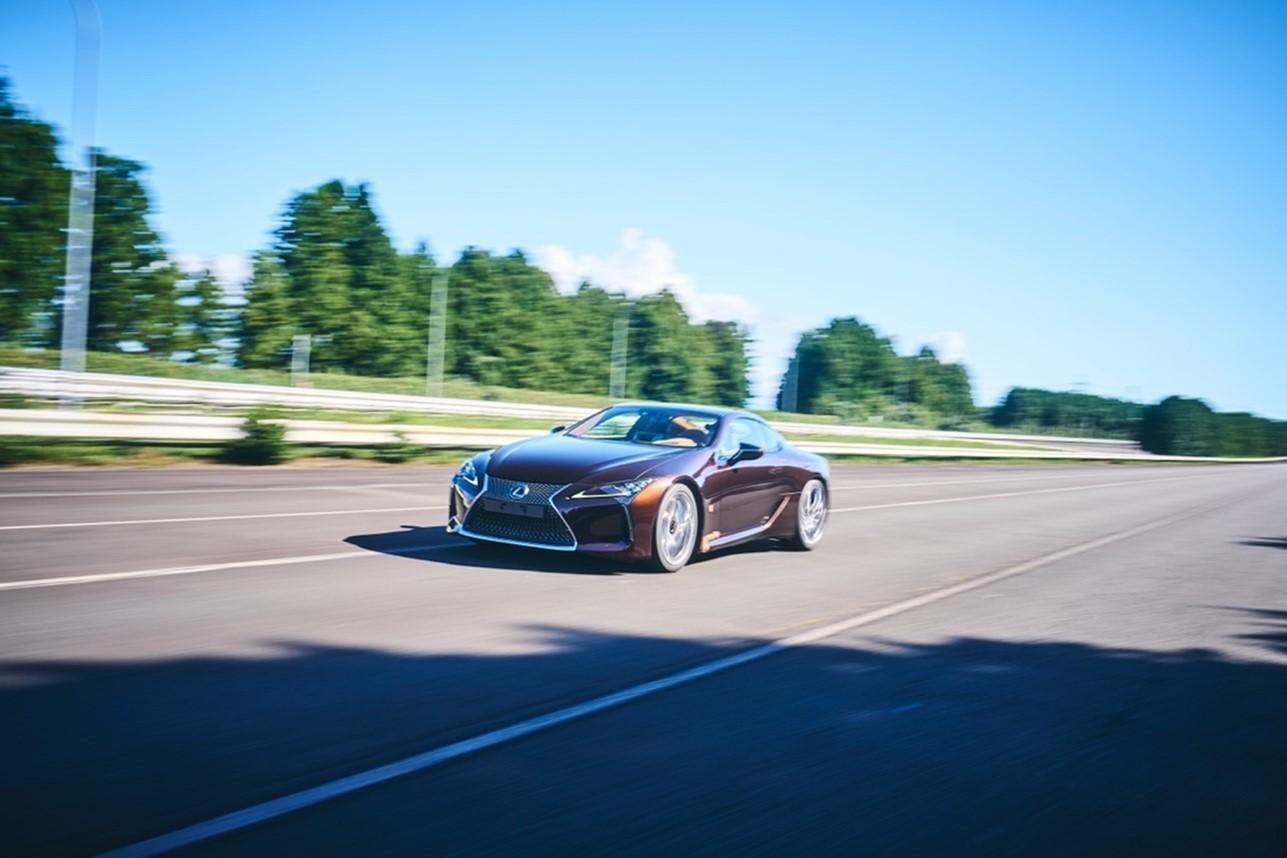
Veteran Iteya shared his insights.
Iteya
In our work, we evaluate and consider various aspects, such as the accelerator pedal response, the shift quality and time, and the acceleration profile.
If a driver cannot precisely control the pedal to accelerate from a certain speed to a target speed, they cannot evaluate powertrain drivability.
Test drivers need to be like sensors, able to accurately replicate every driving situation a customer might encounter and sense the phenomena occurring in the car.
To accurately assess a vehicle, we continuously hone our driving skills.
In the test conducted by veteran Iteya and the young Sagara, the following data was collected.
First, the test was designed to replicate scenarios like quickly merging onto a highway from a short on-ramp or overtaking a vehicle in front. This involved what is referred to as a ”step press” or ”kickdown” of the accelerator, which result in a fast accelerator response.
As shown in the graph for the 40-80km/h acceleration, the target accelerator position was 50%. The three lines represent different parameters: purple for vehicle speed (km/h), light blue for longitudinal G (acceleration in m/s²), and green for accelerator position (%), with the horizontal axis indicating elapsed time.
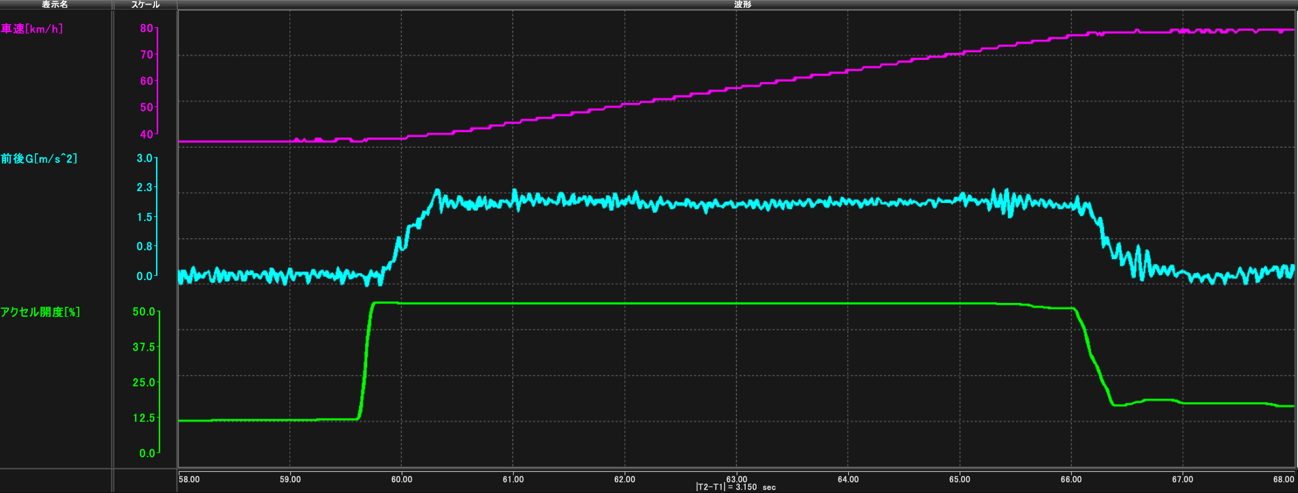
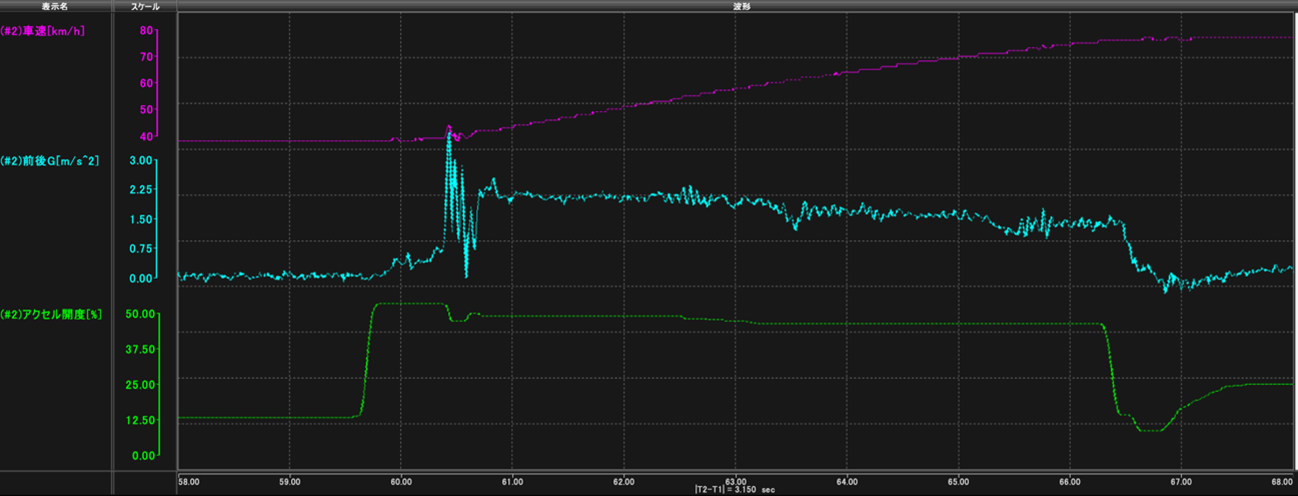
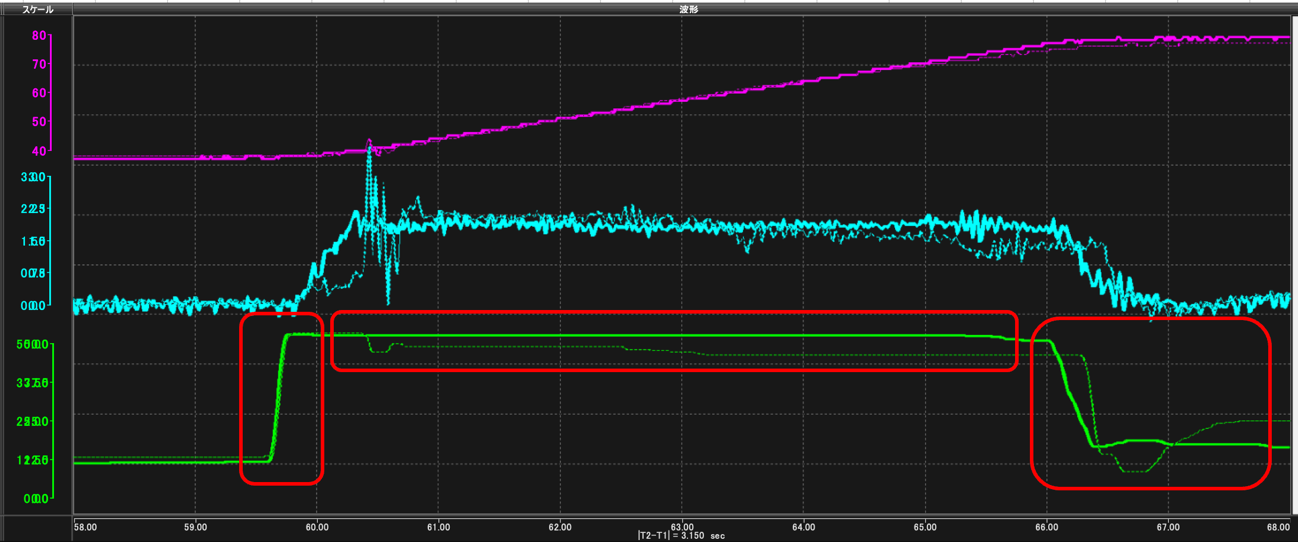
When accelerating, veteran Iteya was able to quickly press the accelerator to the targeted opening (green) and maintain that level consistently.
Sagara, like Iteya, initially pressed the accelerator well but was unable to maintain the position, resulting in a drop. This led to greater fluctuations in the longitudinal acceleration G (light blue) (see the red circles on the left and center).
And then, how did they perform in easing off to maintain a constant speed once the vehicle reached 80km/h?
Veteran Iteya quickly adjusted to the appropriate level to maintain 80km/h, with minimal additional adjustments after easing off the accelerator.
In contrast, although Sagara was able to act quickly, there was significant variation in his accelerator position, and it took him longer to achieve and maintain a steady speed of 80km/h (see the red circle on the right).
On the following page, it becomes evident that there is a clear difference in driving skills between the veteran and the young driver. What exactly accounts for this difference?

